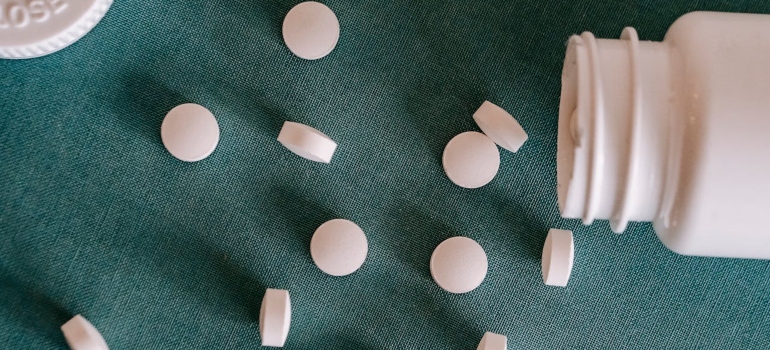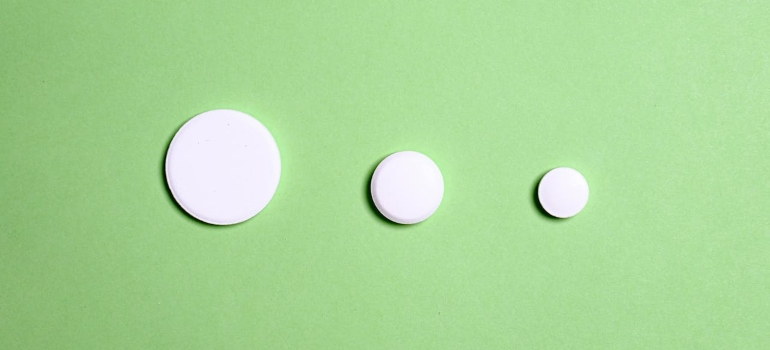Opioid withdrawal can be difficult and overwhelming, which is why choosing the right treatment is important. Two common medications used during opioid withdrawal are Suboxone and Methadone. Both options have helped many people manage their withdrawal symptoms and move toward recovery. However, the question remains: What is better for opioid withdrawal – Suboxone or Methadone? This choice depends on many factors, including your situation, health, and level of addiction. Understanding how each medication works can help you make an informed decision with your healthcare provider. In this article, we will break down the key differences between Suboxone and Methadone, their benefits, and their risks, to help you decide which might be the better option for you. If you’re seeking more help, rehabs in WV and other locations can guide you through recovery.
What is Opiate Withdrawal?
Opioid withdrawal occurs when someone who has been using opioids regularly stops or reduces their intake. The body becomes physically dependent on opioids, so when they’re no longer available, it reacts in a way that causes a range of uncomfortable symptoms. Withdrawal can be both physical and psychological, often involving severe cravings, muscle aches, nausea, vomiting, anxiety, and insomnia. These symptoms can range from mild to severe, depending on the level of dependency and how long opioids were used.

Withdrawal isn’t just difficult because of the physical symptoms. Psychological challenges, such as anxiety and depression, can make it even harder to stop using opioids. This is why many people find it difficult to quit on their own. Medical treatments like Suboxone and Methadone can make this process more manageable by reducing cravings and easing the symptoms.
Recognizing the early signs of opiate addiction is key to preventing withdrawal from becoming a serious issue. If someone uses opioids regularly and feels uncomfortable or ill when trying to quit, withdrawal could already be happening. In such cases, seeking help from healthcare providers can offer relief. These professionals can guide you to treatments that reduce the intensity of withdrawal symptoms and make recovery smoother. Getting the right help is the first step toward long-term sobriety and well-being.
Suboxone: What Is It and How Does It Work?
Suboxone is a combination of two medications: buprenorphine and naloxone. Buprenorphine is a partial opioid agonist, which means it activates opioid receptors in the brain, but to a much lesser extent than full opioids like heroin or prescription painkillers. This helps reduce withdrawal symptoms and cravings without causing the intense highs that come with other opioids. Naloxone, on the other hand, is an opioid antagonist. Its role is to block the effects of opioids, especially if someone tries to misuse Suboxone by injecting it. This combination makes Suboxone a safer option for many people struggling with opioid addiction.
One of the benefits of Suboxone is that it has a “ceiling effect,” meaning that after a certain dose, taking more of the medication doesn’t increase its effects. This reduces the risk of overdose compared to full opioid agonists like Methadone. It’s often prescribed in an outpatient setting, allowing individuals to take it at home with guidance from a healthcare provider.
However, Suboxone isn’t without its downsides. Like any medication used in addiction treatment, it can have side effects such as headaches, dizziness, or constipation. It also has the potential to be addictive, which is why it’s important to use it under a doctor’s supervision. Suboxone works best when paired with counseling and education on ways to refuse drugs, which can help prevent relapse and support long-term recovery. With the right support, Suboxone can be an effective part of a comprehensive treatment plan.

Metahdon: What Is It and How Does It Work?
Methadone is another medication commonly used to manage opioid withdrawal. Unlike Suboxone, Methadone is a full opioid agonist, meaning it fully activates the opioid receptors in the brain. This helps reduce withdrawal symptoms and cravings while preventing the euphoric high associated with other opioids. Methadone has been used for decades as part of opioid addiction treatment and is often administered through specialized clinics, where patients receive their daily dose under supervision.
One advantage of Methadone is its ability to manage severe cases of opioid addiction. It’s particularly helpful for people who have been using high doses of opioids or for those who have tried other treatments unsuccessfully. Methadone can provide long-lasting relief, often for 24 hours or more, which helps prevent the intense cravings and discomfort that can lead to relapse.
However, Methadone does come with certain risks. Because it’s a full opioid agonist, it has a higher potential for abuse and overdose compared to Suboxone. Patients must often visit a clinic daily, which can be a challenge for those looking for more flexibility. Additionally, Methadone can lead to dependency if used long-term, and withdrawal from Methadone itself can be difficult.
While both Methadone and Suboxone are effective, Methadone is often used for those struggling with the drugs hardest to quit, particularly in cases where high levels of support are needed. As with any treatment, Methadone works best when combined with counseling and ongoing medical support.
Comparison of Suboxone and Methadone
When comparing Suboxone and Methadone, there are several factors to consider. One important difference is how they are administered. Suboxone is typically prescribed for home use, allowing patients more independence and flexibility. Methadone, on the other hand, often requires daily visits to a clinic, which provides more structure but less convenience. For those who need a strict routine and supervision, Methadone might be the better choice, while Suboxone suits those who can manage treatment at home.
In terms of safety, Suboxone generally has a lower risk of overdose due to its ceiling effect. This makes it a safer option for many, especially individuals who are at risk of relapse. Methadone, being a full opioid agonist, carries a higher risk of overdose if not properly monitored, especially when used long-term or in combination with other substances.
Cost and access can also be deciding factors. Suboxone may be more readily available through outpatient providers, whereas Methadone treatment is usually tied to specific clinics. The cost of Methadone treatment can be higher due to the need for daily visits and monitoring, while Suboxone offers more flexibility in treatment settings.
Both medications can be highly effective, but the best choice often depends on individual needs, health, and the level of addiction. Consulting with a healthcare provider or medication assisted treatment West Virginia can help choose the right option. Personalized care is essential for managing withdrawal and supporting long-term recovery.

What Is Better For Opioid Withdrawal: Suboxone or Methadone?
When it comes to deciding what is better for opioid withdrawal—Suboxone or Methadone—the answer isn’t always clear-cut. Both medications offer valuable benefits, but which one is right for you depends on your specific circumstances. For individuals with milder forms of opioid addiction or those looking for an intensive outpatient program West Virginia, Suboxone might be a more convenient and safer option. Its lower risk of overdose and the ability to take it at home makes it appealing for those who can manage their recovery more independently.
On the other hand, Methadone is often the better choice for people with more severe addiction, particularly those who have used opioids for an extended period. Its stronger effects and longer-lasting relief make it ideal for cases where managing intense cravings and withdrawal symptoms is critical. Methadone may also be more suitable for individuals who need a structured treatment environment, as daily clinic visits provide regular support and supervision.
Ultimately, the right choice depends on factors such as the severity of addiction, access to healthcare, and personal preferences. In both cases, these medications are designed to ease the symptoms of opioid withdrawal, giving patients a chance to focus on recovery. Working with a healthcare provider who understands your medical history and treatment goals is essential to make an informed decision. The goal is not just to manage withdrawal but also to create a solid foundation for long-term recovery.
Long Term Recovery and Maintenance
Recovery from opioid addiction goes beyond just managing withdrawal symptoms. Long-term success often requires ongoing treatment and support, which is why both Suboxone and Methadone play an important role in maintenance programs. These medications can help people stay on track by reducing cravings and preventing relapse, making it easier to focus on rebuilding a healthy lifestyle.
Suboxone is often used as a maintenance medication because it can be taken at home, offering more flexibility for people who want to integrate treatment into their daily lives. Methadone, while more structured due to the clinic visits, can also provide stability for those needing close monitoring. Both options can be part of a long-term recovery plan, depending on what works best for the individual.
It’s important to remember that medication is just one part of the recovery process. Ongoing counseling, behavioral therapy, and support groups are key to achieving lasting sobriety. For those in need of comprehensive care, a long term drug rehab WV facility can provide a more intensive program to address both the physical and psychological aspects of addiction. Combining medication with these additional support systems is often the most effective approach for long-term recovery.

Side Effects and Risks of Long-Term Use
Long-term use of Suboxone and Methadone can have side effects that need to be carefully managed. While both medications are effective in reducing cravings and helping people stay off opioids, they can also lead to dependency if used for an extended period. Suboxone’s partial agonist properties make it less likely to cause severe dependency, but stopping it suddenly can still lead to withdrawal symptoms. These symptoms might include anxiety, muscle aches, or insomnia.
Methadone, on the other hand, is more likely to cause physical dependence due to its full agonist nature. Stopping Methadone without a proper tapering plan can result in intense withdrawal symptoms, similar to those caused by opioids. This is why patients on Methadone are often on a closely monitored schedule, gradually reducing the dosage under medical supervision.
Both medications also have other common side effects such as nausea, constipation, and dizziness. Regular monitoring by a healthcare provider is essential to manage these side effects and adjust treatment as necessary. Despite these risks, the benefits of using Suboxone or Methadone under professional guidance often outweigh the potential negatives, especially when the goal is long-term sobriety and recovery from opioid addiction.
Choosing the Right Treatment – What Is Better For Opioid Withdrawal
Choosing the right treatment between Suboxone and Methadone often comes down to personal needs and circumstances. It’s important to consider factors like the severity of addiction, lifestyle, and the level of support required. For some, Suboxone offers greater flexibility because it can be taken at home, making it ideal for those who need more independence in their recovery journey. Methadone, on the other hand, maybe better for individuals with a longer history of opioid use or those needing the structured environment of a clinic. Consulting with a healthcare professional is essential in making the best choice for your situation. They will evaluate your medical history, the level of addiction, and your personal goals to determine the most effective treatment. Both Suboxone and Methadone are proven to help manage withdrawal symptoms and support recovery, but the decision about what is better for opioid withdrawal is highly individual.



